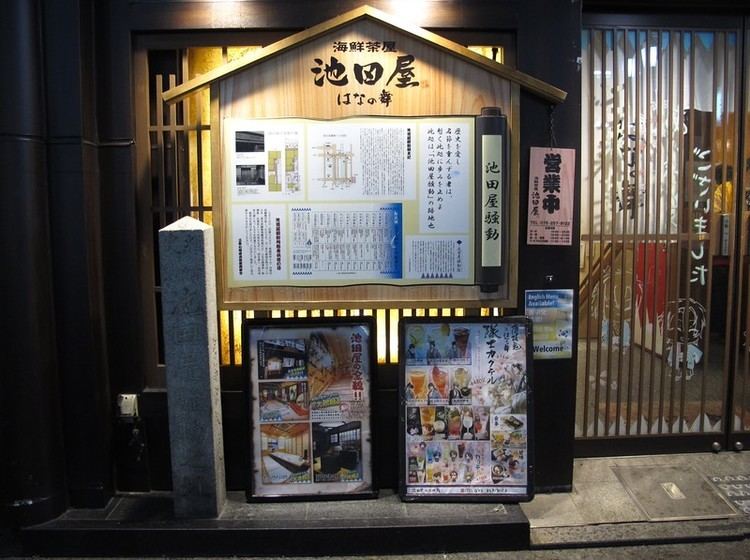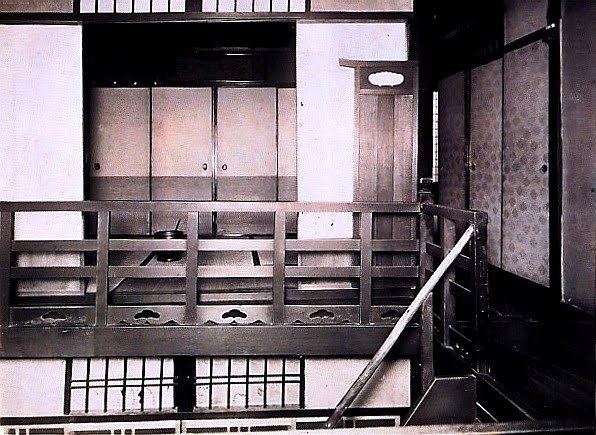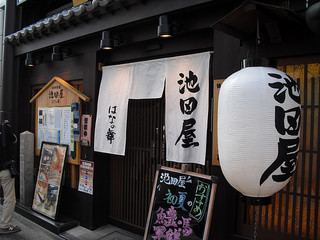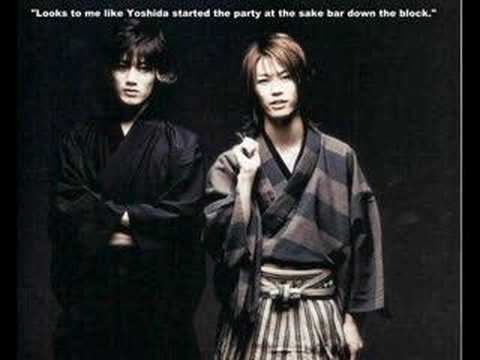 | ||
Ikedaya incident j rock tyle
The Ikedaya Incident (池田屋事件, Ikedaya jiken), also known as the Ikedaya Affair, was an armed encounter between the shishi which included masterless samurai (rōnin) formally employed by the Chōshū and Tosa clans (han), and the Shinsengumi, the Bakufu's special police force in Kyoto on July 8, 1864 at the Ikedaya Inn in Kyoto, Japan.
Contents

At the end of the Edo period, Kyoto attracted unemployed rōnin of varying allegiances. Those from the Chōshū and Tosa clans were heavily influenced by sonnō jōi (revere the Emperor, expel the foreign barbarians) philosophy and supported forcibly removing all western influences from Japan. Emperor Kōmei and the Aizu and Satsuma clans preferred a unification of the bakufu and the imperial court. The bakufu tried to retain their centralized power. In this political chaos, ronin from the various factions began to assassinate each other. The bakufu organized groups of ronin including Shinsengumi and charged them with arresting or killing (should they resist arrest) the sonnō jōi shishi.
The shishi were using the Ikedaya Inn as a staging point for their forces. The Shinsengumi arrested one of the shishi, Shuntaro Furutaka. The method of interrogation, carried out by Shinsengumi vice-commander Hijikata Toshizō was alleged to be particularly brutal, although it appears to be largely without verification. With the prisoner unresponsive, Hijikata was said to have suspended the man by his ankles, restraining his wrists, and driven five-inch spikes into the heels of the man's feet. Placing lit candles upon the holes, hot wax dripped deep into his calves. The prisoner eventually claimed that they planned to set fire in Kyoto and capture Matsudaira Katamori, the daimyō of the Aizu clan whose duties included policing Kyoto at the time. The urgency of the situation thus revealed, Kondō Isami led a group of Shinsengumi troops to the inn to arrest the shishi; a second group, led by Hijikata arrived shortly thereafter.

Historians are divided whether the shishi were actually preparing to set fire to Kyoto. The allegations were based on a confession of one prisoner (Furukata) under torture, and only appears in the records of the bakufu. Furukata was later killed in jail during the Kinmon Incident. Kido Takayoshi who was at the Ikedaya claimed many years later that they had only met to discuss how to rescue Furukata from the Shinsengumi. Whether or not Hijikata actually employed such a cruel interrogation method is also in some doubt, as conflicting reports from those in attendance (such as Nagakura Shinpachi) exist. Some popular fiction, like the account of Moeyoken (a novel by Shiba Ryōtarō) seem to ignore Hijikata's potential participation.

A total of eight shishi were killed and twenty-three arrested; the Shinsengumi lost only one member in the battle, though two more members later died of injuries. Amongst those injured in the battle were Nagakura Shinpachi and Tōdō Heisuke. It was also said that the later captain of the first Shinsengumi unit Okita Sōji collapsed during the affair (the cause of which is disputed among researchers, some believe it was due to the tuberculosis which eventually killed him, while others believe it was some other ailment). This incident made it clear to all that the Shinsengumi were a powerful force in Kyoto to be feared by the sonnō jōi rōnin.

Some historians credit this incident with delaying the eventual Meiji victory by a year or two, whereas others claim it actually hastened the fall of the bakufu by triggering a cascade of bloody retaliations and assassinations. After the Ikedaya incident, the samurai of the Choshu clan retaliated at the Hamaguri Gate of the Imperial Palace on July 19 in the Kinmon Incident. The Shogunate followed up with an armed expedition in September 1864.
As for the Ikedaya itself, it was destroyed in the battle. Though for many years a pachinko parlor sat on the grounds of the Ikedaya, with the only remnant being a memorial tablet relating the events that occurred on the site, in 2009 an izakaya named Ikeda-ya opened, designed and decorated with an Ikeda-ya Shinsengumi/Bakumatsu theme.
In fiction
The battle at the Ikedaya Inn is the central point of the manga series Shinsengumi Imon Peacemaker and its anime version, Peacemaker Kurogane.
The Rurouni Kenshin OVA: Tsuiokuhen, set in the time of the Meiji Restoration, has a depiction of the Ikedaya Incident. Different depictions of the Ikedaya Incident has also appeared in the Rurouni Kenshin manga and anime.
In volume 6 of the manga Kaze Hikaru, the Ikedaya incident is the main event.
The Ikedaya Incident is also dramatized in episodes 2 and 3 of the anime series Hakuōki.
In the SNK game The Last Blade the character Washisuka Keichiro, a member of the Shinsengumi, is sent to this place to "investigate" in his ending.
